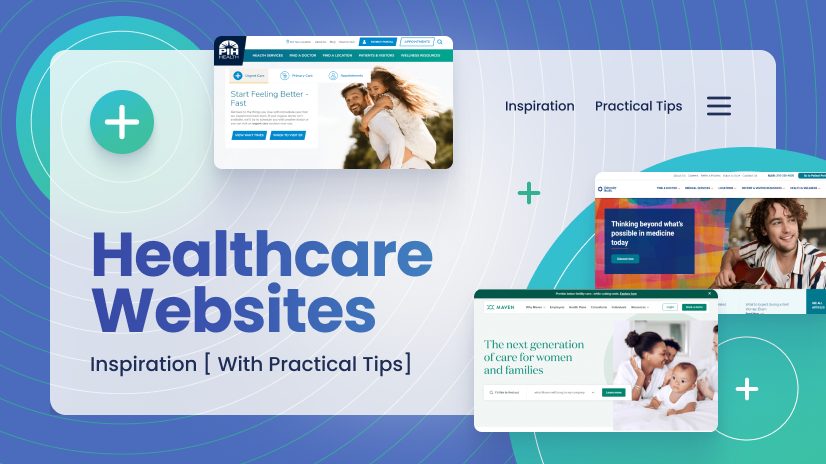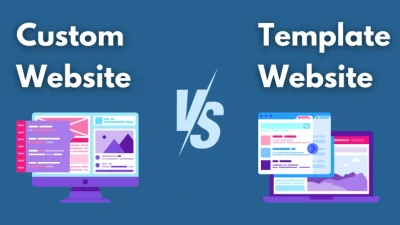Introduction
In the healthcare industry, trust is everything. Patients rely on providers not only for medical expertise but also for clear communication, privacy, and compassion. A Website Design for healthcare provider’s website is often the first point of contact—and it must reflect these values. In 2025, effective healthcare web design goes beyond aesthetics; it’s about building trust, ensuring clarity, and delivering a seamless user experience.
This blog explores the essential principles, features, and strategies for designing websites for healthcare providers, with a focus on trust, clarity, accessibility, and compliance.
Why Website Design Matters in Healthcare
🧠 First Impressions Count
Patients often judge the credibility of a provider based on their website. A clean, professional design builds confidence.
📱 Digital-First Healthcare
With telemedicine, online booking, and digital records, the website is now a central hub for patient interaction.
🔒 Privacy and Compliance
Healthcare websites must comply with regulations like HIPAA, GDPR, and India’s DPDP Act, ensuring data protection and transparency.
🧭 Navigation and Clarity
Patients need to find information quickly—whether it’s services, contact details, or emergency instructions.
Core Principles of Healthcare Website Design
1. Trustworthiness
- Use professional branding and imagery
- Display certifications, affiliations, and testimonials
- Include clear contact information and physical addresses
2. Clarity
- Use plain language and avoid medical jargon
- Organize content with clear headings and intuitive menus
- Highlight key actions (e.g., “Book Appointment,” “Call Now”)
3. Accessibility
- Follow WCAG 2.2 guidelines
- Support screen readers, keyboard navigation, and high-contrast modes
- Offer multilingual options for diverse patient populations
4. Security
- Use HTTPS and secure forms
- Clearly explain data usage and privacy policies
- Implement secure patient portals and authentication
5. Empathy
- Use warm, welcoming visuals and tone
- Include patient stories and community engagement
- Design for emotional comfort, especially in sensitive areas

Essential Features for Healthcare Websites
🗓️ Online Appointment Booking
- Real-time scheduling
- Confirmation and reminders
- Integration with EHR systems
📞 Contact and Emergency Info
- Click-to-call buttons
- Location maps and directions
- Emergency protocols and helplines
🧑⚕️ Provider Profiles
- Credentials, specialties, and bios
- Patient reviews and ratings
- Availability and contact options
📄 Service Pages
- Clear descriptions of treatments and procedures
- FAQs and preparation guides
- Insurance and payment information
🧠 Patient Portal Access
- Secure login for records, prescriptions, and communication
- Mobile-friendly interface
- Support and troubleshooting resources
📚 Educational Content
- Blog posts, videos, and guides
- Preventive care tips and wellness resources
- Condition-specific information
Design Strategies for Building Trust
✅ Use Real Imagery
Avoid stock photos—use real staff, facilities, and community events.
✅ Highlight Credentials
Display certifications, awards, and affiliations prominently.
✅ Showcase Testimonials
Include patient reviews, success stories, and video testimonials.
✅ Maintain Consistency
Use consistent branding, colors, and typography across pages.
✅ Offer Transparency
Be clear about pricing, procedures, and policies.
Mobile Optimization and Responsive Design
With most users accessing healthcare websites via mobile devices, responsive design is critical.
- Prioritize fast load times
- Use large, tappable buttons
- Simplify navigation for small screens
- Ensure forms are mobile-friendly
SEO and Local Search Optimization
Healthcare providers must be discoverable online, especially for local patients.
- Use location-based keywords (e.g., “dentist in Kolkata”)
- Optimize Google Business Profile
- Include schema markup for services and reviews
- Create geo-targeted landing pages
Compliance and Legal Considerations
🔐 HIPAA (US) / DPDP (India) / GDPR (EU)
- Encrypt patient data
- Avoid collecting unnecessary personal information
- Provide opt-in consent for cookies and communications
📄 Accessibility Laws
- Ensure compatibility with assistive technologies
- Provide alternative text for images and media
- Avoid flashing content or complex animations

Case Studies
🏥 Mayo Clinic
- Clean, professional design
- Rich educational content
- Easy navigation and multilingual support
🧑⚕️ Apollo Hospitals
- Mobile-first design
- Integrated appointment booking
- Clear service categorization
🏥 Cleveland Clinic
- Patient-centric UX
- Secure portal access
- Trust-building visuals and messaging
Future Trends in Healthcare Web Design
1. AI Chatbots for Triage
- Answer common questions
- Guide users to appropriate care
2. Telehealth Integration
- Video consultations directly from the website
- Secure document sharing
3. Emotionally Aware Interfaces
- Detect user stress and adapt tone or layout
- Offer calming visuals and support options
4. Voice Navigation
- Hands-free browsing for accessibility and convenience
5. Personalized Dashboards
- Tailored content based on user history and preferences
Conclusion
A healthcare provider’s website is more than a digital brochure—it’s a lifeline for patients seeking clarity, comfort, and care. By prioritizing trust, accessibility, and user experience, providers can create websites that not only inform but also reassure and empower.
In 2025, the most effective healthcare websites will be those that combine technical excellence with human empathy—building trust into every pixel.





